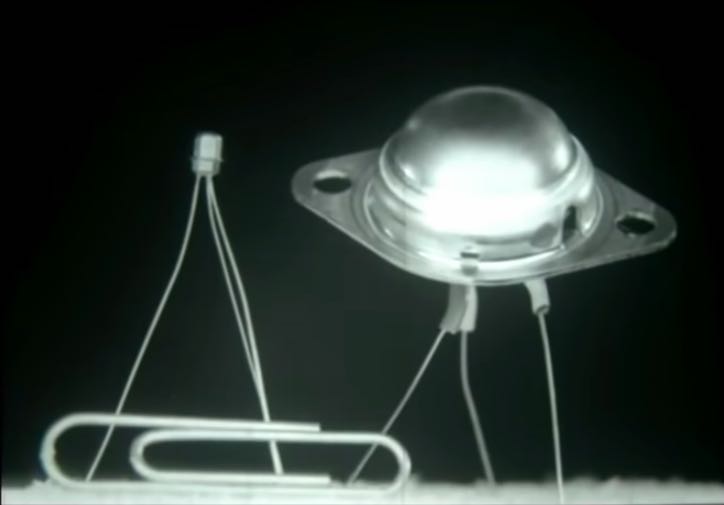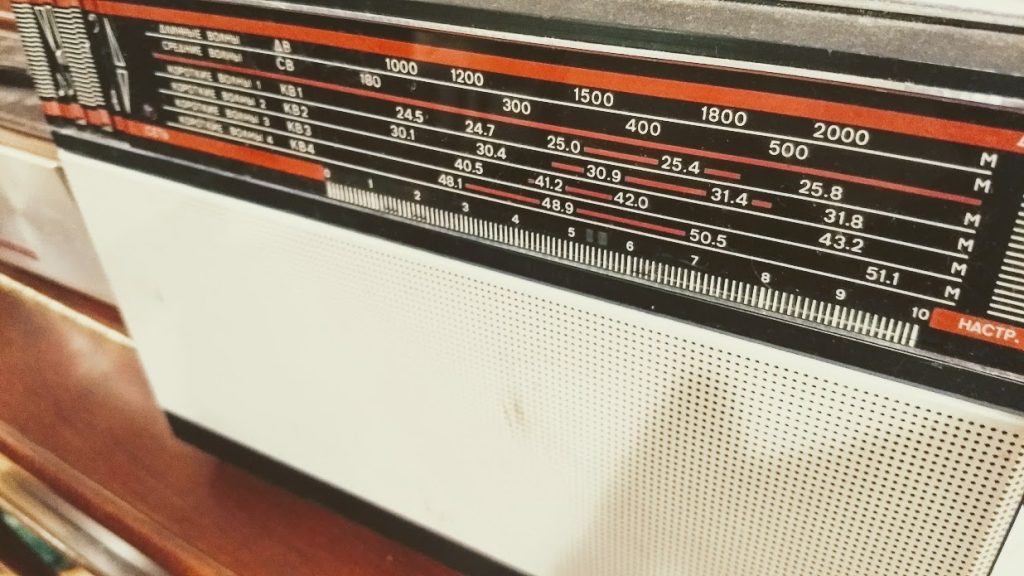 Many thanks to SWLing Post contributor, Dave Zantow, who shares the following video from the Computer History Archives Project YouTube channel:
Many thanks to SWLing Post contributor, Dave Zantow, who shares the following video from the Computer History Archives Project YouTube channel:
https://youtu.be/BillR7xtTxc

 Many thanks to SWLing Post contributor, Dave Zantow, who shares the following video from the Computer History Archives Project YouTube channel:
Many thanks to SWLing Post contributor, Dave Zantow, who shares the following video from the Computer History Archives Project YouTube channel:
https://youtu.be/BillR7xtTxc
 Radio Waves: Stories Making Waves in the World of Radio
Radio Waves: Stories Making Waves in the World of RadioBecause I keep my ear to the waves, as well as receive many tips from others who do the same, I find myself privy to radio-related stories that might interest SWLing Post readers. To that end: Welcome to the SWLing Post’sRadio Waves, a collection of links to interesting stories making waves in the world of radio. Enjoy!
Many thanks to SWLing Post contributors Marty, Martin Butera, and the Radio Survivor for the following tips:
Transistors, the electronic amplifiers and switches found at the heart of everything from pocket radios to warehouse-size supercomputers, were invented in 1947. Early devices were of a type called bipolar transistors, which are still in use. By the 1960s, engineers had figured out how to combine multiple bipolar transistors into single integrated circuits. But because of the complex structure of these transistors, an integrated circuit could contain only a small number of them. So although a minicomputer built from bipolar integrated circuits was much smaller than earlier computers, it still required multiple boards with hundreds of chips.[…]
[…]The cabin on a rocky peninsula in Northwest Ireland might not have had all the letters for its Scrabble set or a microwave, but it did have another marvel of 20th century technology. It was a little CB/AM/FM radio crouching behind a box of matches on top of a kitchen cabinet.
I decided to put the switch on FM and started swirling the dial. As soon as I heard a lilting woman’s voice underneath a sheet of static, I began carrying it around the tiny room while adjusting the rabbit ears.
Now the signal was as clear as the peat-rich water was brown, a farmer was being interviewed about the economic downturn. It was a quick piece — just some brogue-ish assurances that one doesn’t choose agriculture for an easy life. Then came a trio playing an Irish ballad, and then came North West Hospice Bingo: a bingo game that allows listeners from across the broadcast range of Ocean FM’s two regional frequencies to play bingo, including the residents of the hospice.
I’d bundle up for walks outside where the wind was loud, blustery, and sacred. The ocean crashed against the rocks in a way I never conceived as being real outside of movies. But when I was inside, the radio might as well have been a Soviet relic with only a volume control and no tuner because I simply couldn’t touch that dial. I learned the schedule quickly, timing walks and firewood runs so that I’d be back in time for Country Jamboree, a boy-girl-boy-girl style line-up of Irish and American country tunes.
As I’d stand by the wood-stove, taking off my cold wet socks to put on the toasted, at time singed socks that I’d been roasting, I felt the fulfillment of the promise of radio. I could hear Fessenden making history with the first radio broadcast of music, Oh Holy Night transmitted on a rocky coast on Christmas Eve of 1906 and heard by ships at sea.[…]
Coffee and Radio Listen is an investigation of Brazilian radio listener, by Martin Butera.
How they began listening to radio, the local or international stations that influenced them, the interests they have when tuning to a station, the languages they like to listen to, if they send listeners reports and collect QSLs, their antennas and receivers, and all aspects related to the radio listen both in shortwave and in other bands and modes.
Each month they will have in this blog, an exclusive interview with a Brazilian radio listen. At the end of this project, a free downloadable e-book will be available, which contains all the interviews and statistical references.
Every month there will be a new interview, this month of March launch month we start with 2 interviews
Martin is Argentinian, born in the city of Buenos Aires capital. He currently lives in Brasília DF, capital of Brazil. He is also a journalist, documentary maker and founding member of Radio Atomika 106.1 MHz (Buenos Aires, Argentina).
To know more about CREW 15.61 Radio Listeners’, please visit the following link.
Collaborate on this project by Martín, our friend Rob Wagner (VK3BVW), Mount Evelyn DX Report (adapting the recordings).
Click here her to check out the Coffee And Radio Listen website.
National Public Radio “generally supports” allowing stations to transition, if they wish, to all-digital AM transmission using HD Radio in the United States. But it believes the commission needs to go further on how it would handle interference complaints from neighboring analog stations in the band.
About 80 AM public radio stations are affiliated with NPR or receive operational funding from the Corporation for Public Broadcasting, including WNYC(AM) in New York City.
NPR says it has significant interest in any measures to help AM broadcasters better serve the public by improving the listening experience.
“Facilitating the expansion of HD Radio and its additional functionality for program and public safety information and services would serve the public interest, provided the transition to all-digital HD Radio operation does not cause harmful interference,” NPR wrote in comments filed with the FCC this week.
“As it has in the past, NPR supports the expansion of HD Radio, but not at the expense of current analog AM service.”[…]
Please consider supporting us via Patreon or our Coffee Fund!
Your support makes articles like this one possible. Thank you!
Many thanks to an SWLing Post reader who shared this brilliant 1953 documentary film about the anticipated impact the transistor could have on technology.
Here’s the film description from the AT&T YouTube channel:
Made between the 1947 invention of the transistor at Bell Labs and the 1956 awarding of the Nobel Prize for Physics to its creators, this documentary is less about the discovery itself than its anticipated impact on technology and society. The intent of the film was clearly to give the public of that era their first understanding of what a transistor was and why it mattered so much.
Made for a general audience, the film provides a clear and concise presentation on technological developments that began with the vacuum tube, showing different types of transistors and explaining the significance in their ultimate replacement of tubes.
Included are visions of “things to come,” concepts and creations of how the small transistor might free up an encumbered world: the wrist radio, similar to Dick Tracy’s, but with a cool lapel sound speaker worn like a boutonniere; a portable TV set, which must have seemed astonishing at the time given the huge, heavy cabinetry required to accommodate the plethora of tubes inside 1950s TVs; and the “calculating machine,” or computer, whose size, we’re told, will one day be so reduced because of transistors that it will only require “a good-sized room” rather than a space the size of the Empire State Building. The concept of how small computers could be still remained decades away.
While The Transistor’s vision of the future seems somewhat quaint in retrospect, it captures a moment in time before the transistor became ubiquitous; a time when Bell Labs wanted the world to know that something important had occurred, something that was about to bring tremendous change to everyone’s daily lives.
Click here to view the film on YouTube, or simply watch via the embedded player below: